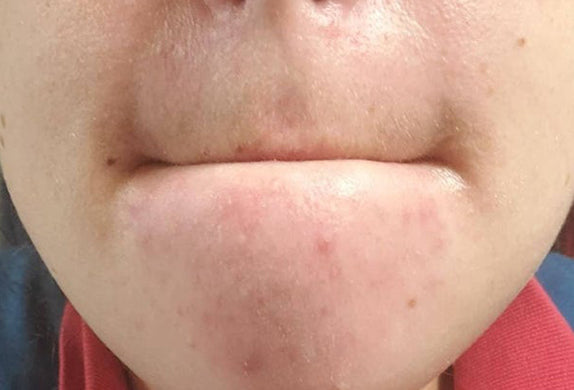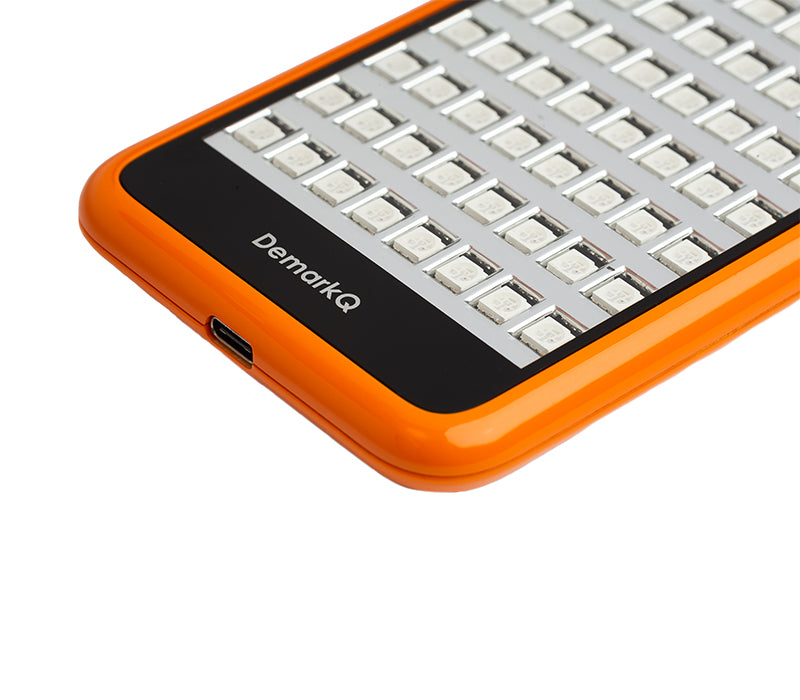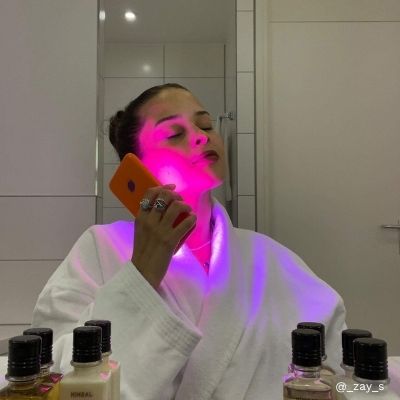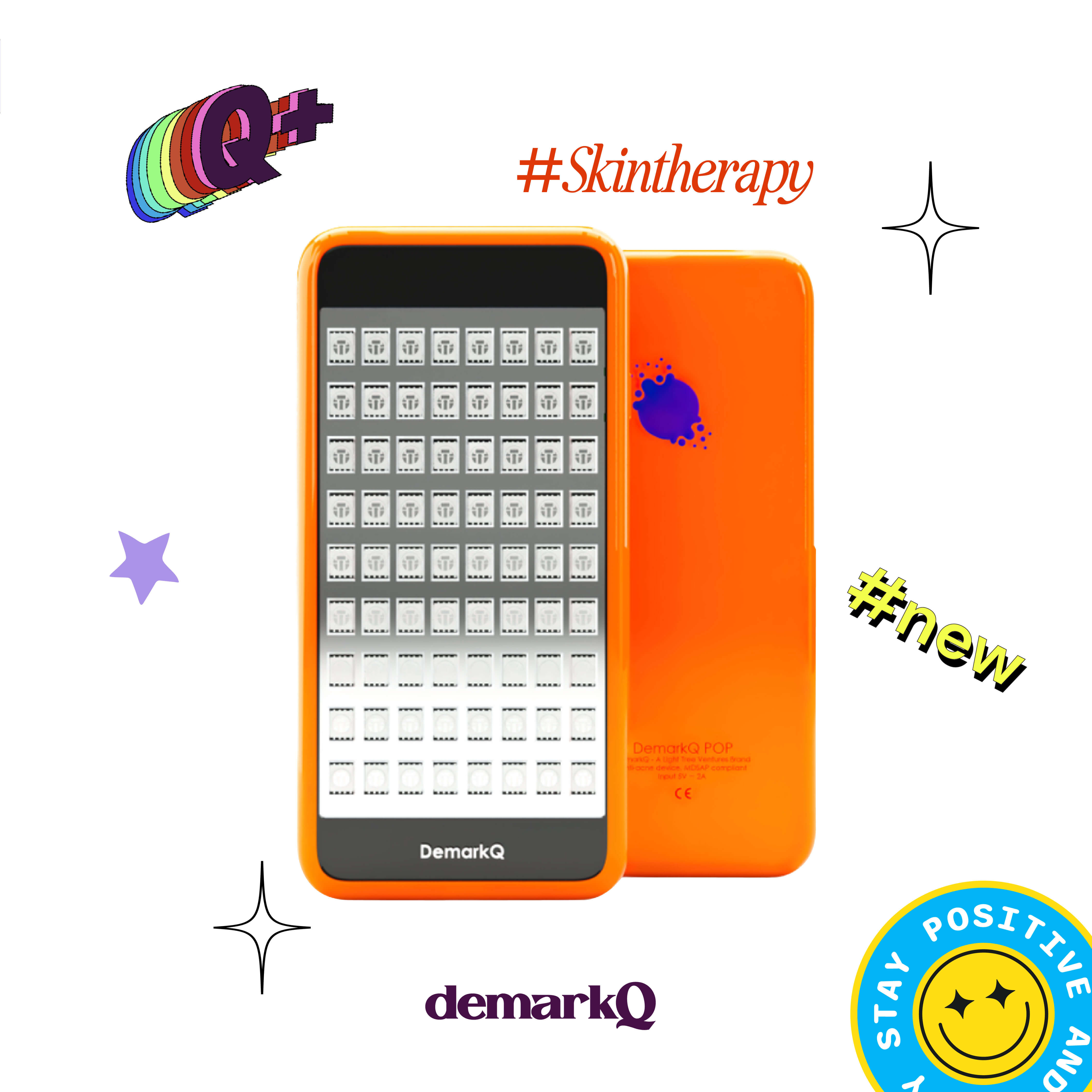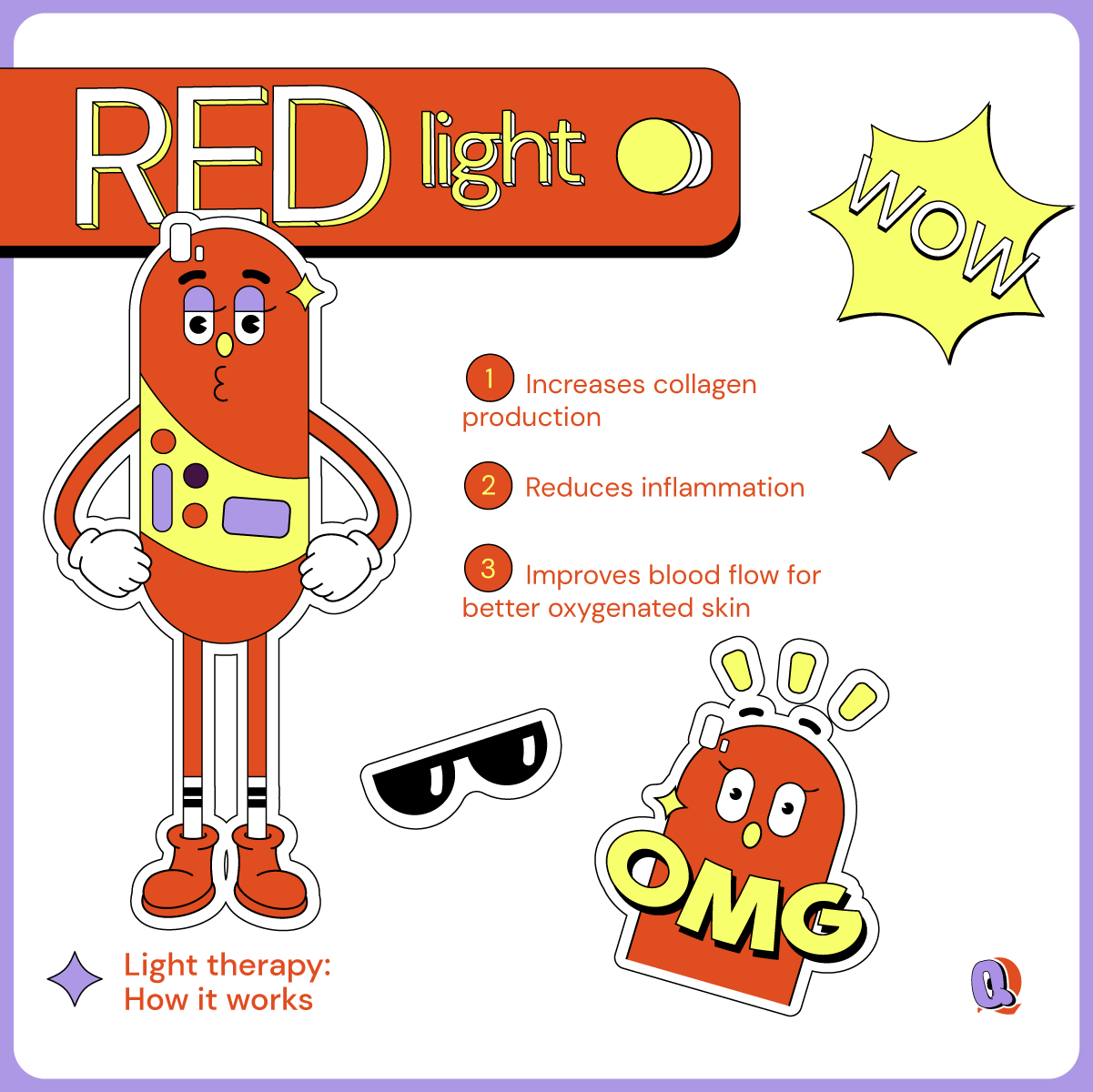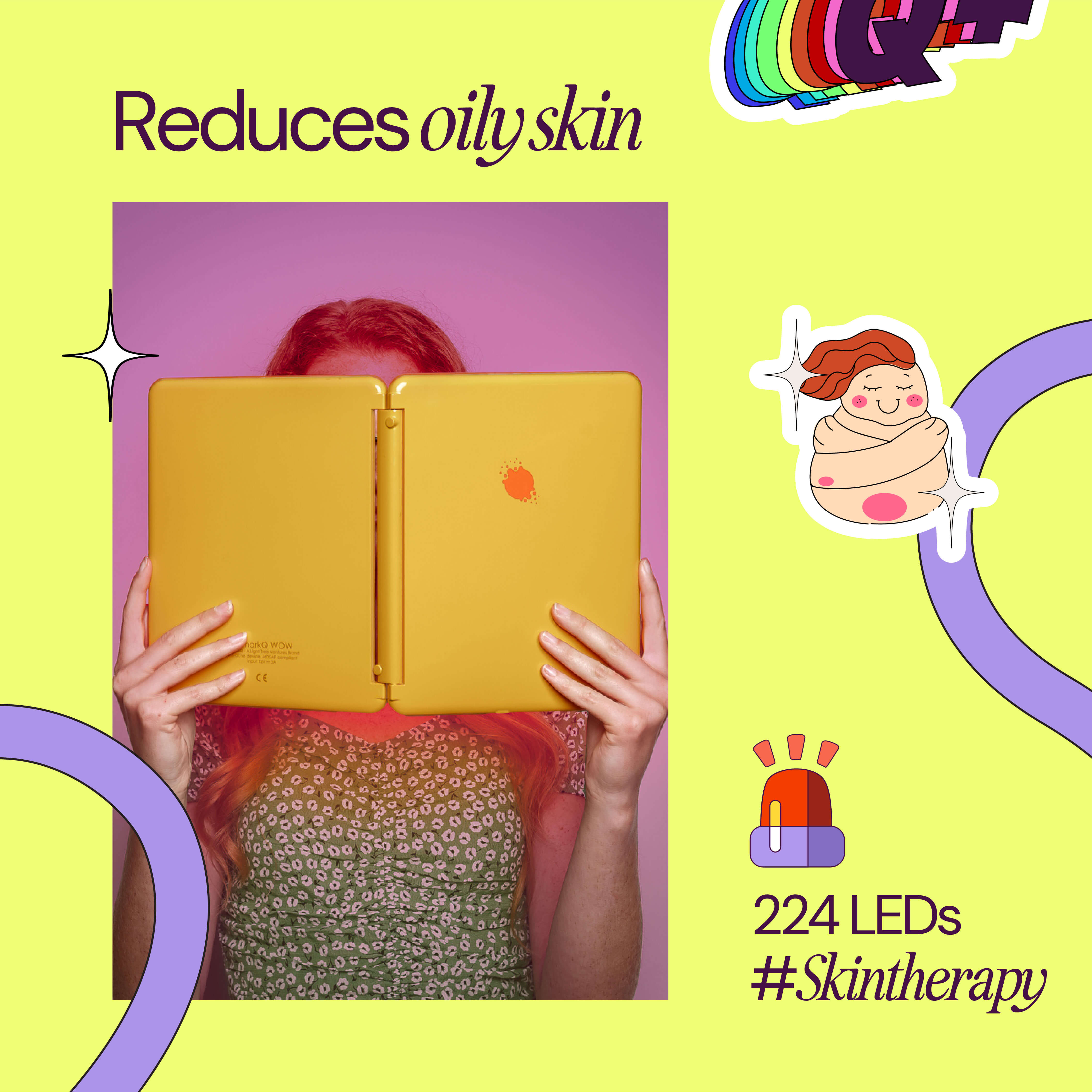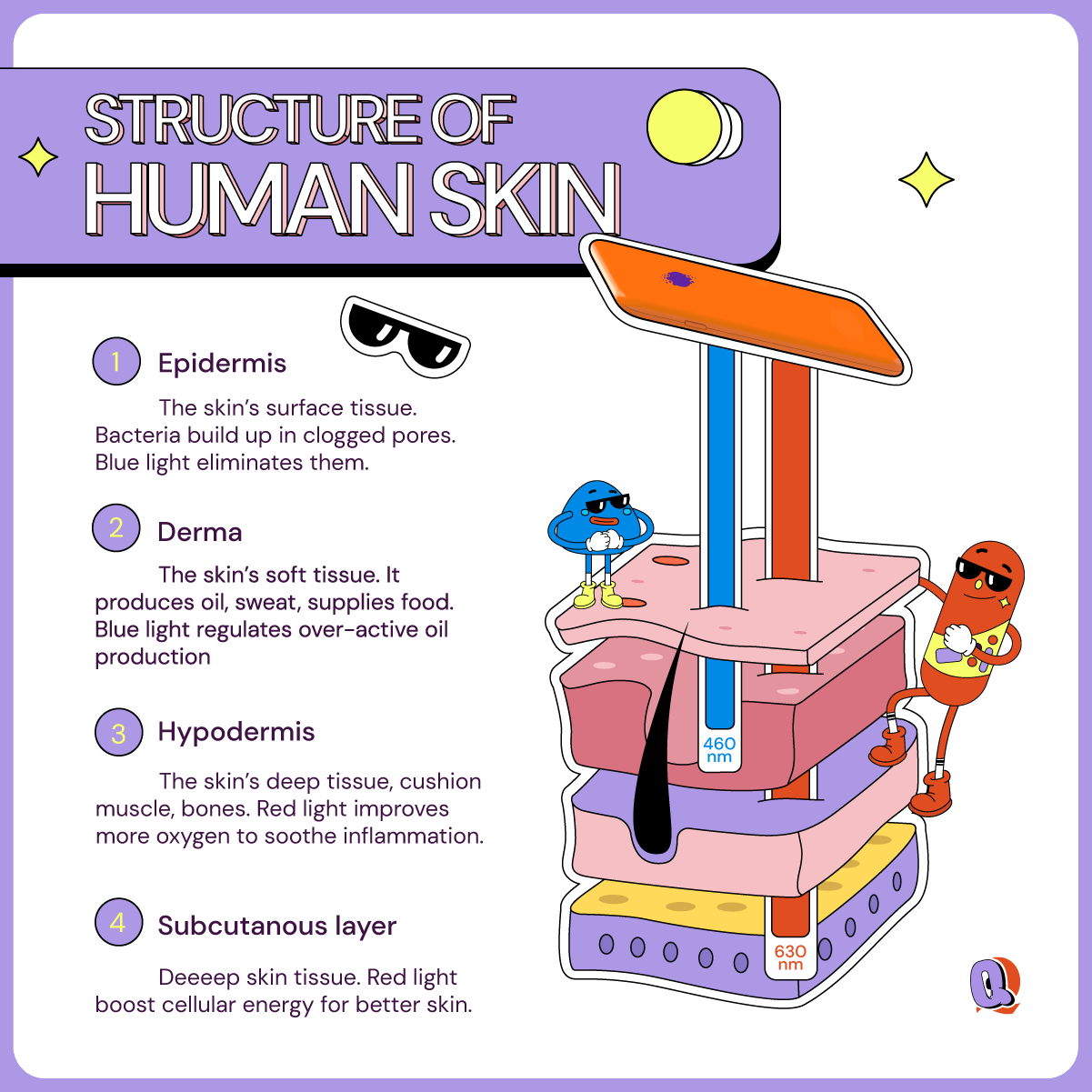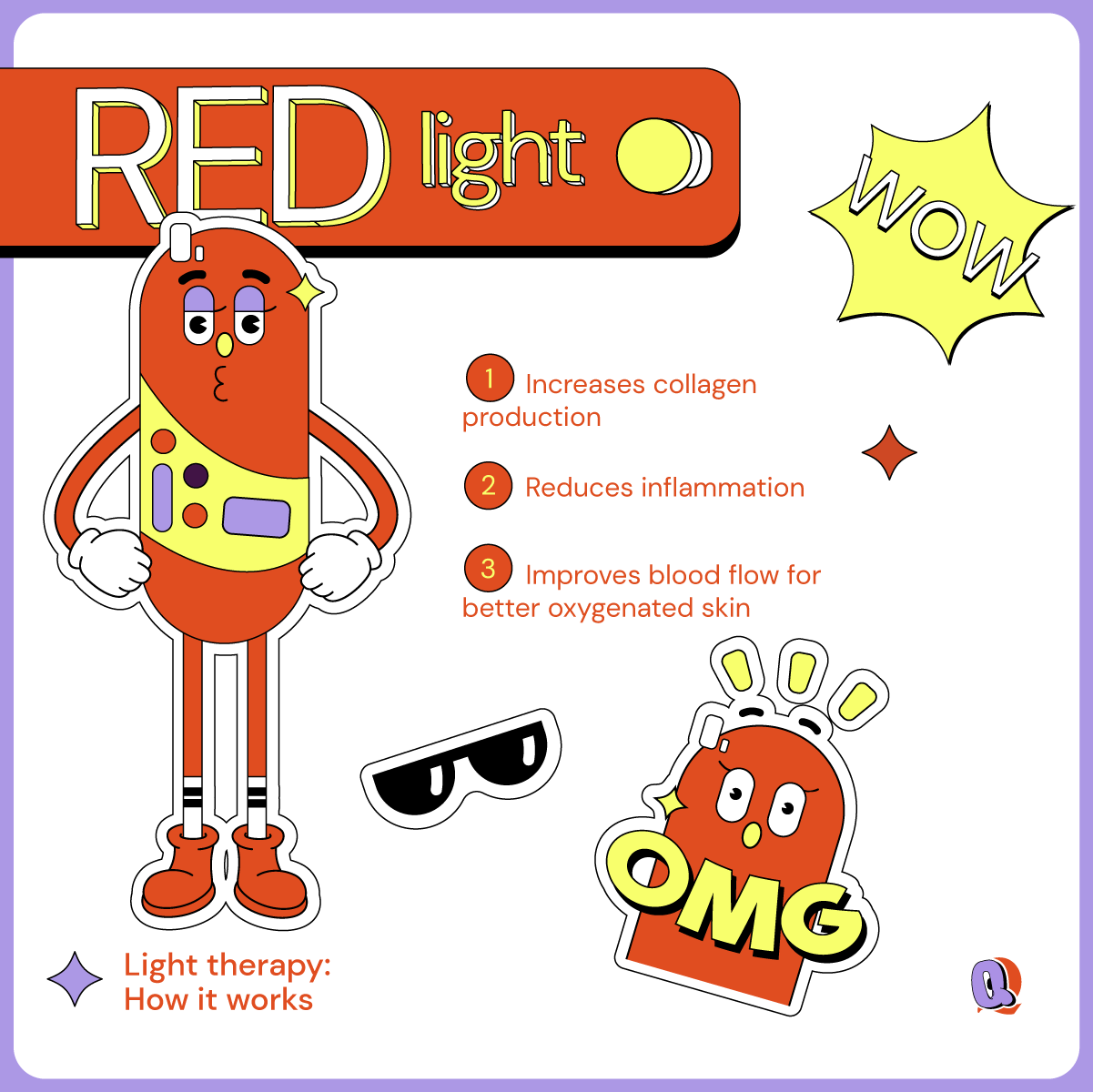LED light therapy is becoming increasingly popular. You may have seen influencers (or your most skincare-obssessed friend) posting these illuminating devices on their social media. But the question remains, how light (of all things) can help clear your skin and give it a glow?
Today, we ask photobiomodulation expert, Sarah Turner who has been actively working in the field for over four years. After leaving her research position in big pharmaceutical companies, Sarah discovered alternative medicine which led her to the biohacking scene. This led her to discover the transformative impact and potential of LED light therapy. Since then, Sarah is continuing her research in what may be the future of many medical treatments - including acne treatment.
Not in the mood to read? Watch the interview instead:
What are the benefits of using light therapy?
The first thing is, I am a big fan of any treatment that is non-toxic. There are a lot of pharmaceutical therapies for various conditions. But that always comes with a price later down the line. Plus, your body always has to find away to deal with any kind of drug intervention. So, that’s, I think, a huge benefit of these treatments - they are entirely non-toxic.
The other thing is they stimulate your body’s healing mechanisms. So, you’re addressing the root cause of the problem rather than dealing with the symptoms. That’s another cool reason why I think light therapy will become one of the medicines of the future. Since it really works with the body, not against it.
How would you apply LED light therapy with acne treatments?
Light therapy has been applied to skin ailments because it is very well-suited to that kind of problem. It’s very easy to get to the surface of the skin using light. And you know, these straightforward devices, handheld devices, the skin is very accessible. And it works because light does penetrate the skin, and depending on what wavelength (and when I say wavelength, that equates to color), the light will penetrate to various depths.
So, the blue light will address the surface of the skin. And then red and near-infrared will go deeper into the skin. And what you’re doing with these treatments is you are changing certain aspects of your physiology. So, for example for blue light- it helps destroy bacteria on the surface of your skin. So, that’s an ideal treatment if you have something like acne where you have bacteria that will cause an issue or that’s already causing a problem. You can deal with that with blue light.
And then red light actually penetrates deeper into the skin. It’s very healing; it’s used for wound-healing and things in hospitals. That will help the skin regain its integrity, build up collagen, help with wrinkles, and all that good stuff.
How would you compare LED light therapy to other types of acne treatments?
Well, I think with problems like acne or other skin conditions, sometimes they can be very difficult to treat, sometimes the treatment programs are difficult to administer. There are a lot of pharmaceutical treatments, like antibiotics for killing bacteria on the skin, are effective, but then you’re also killing the bacteria in your gut, you know?
So, as I said, there’s always a payback when you’re using these kinds of pharmaceutical treatments. But then again, you have to be careful that if there is some kind of antibacterial in there, you’re also going to be killing the other good bacteria that reside on your skin.
So, from my point of view, using light therapy is probably one of the best things you can do for many skin conditions.
Because you know, you’re working with the body and not upsetting the natural balance there. And it's easy. And it shows that if you do use it consistently, you can actually get a very good result. It’s just as effective as other treatments.
Do you think LED will have its breakthrough?
LED as a light source have come into their own. The reason why it is not so widely known is that up until fairly recently, the technology wasn’t there to provide at-home use equipment. Because initially this treatment was done using lasers. This was the kit that was available. And so this used to be called low-level laser therapy. It’s now been renamed to photobiomodulation because LED lights have now been upgraded to the point where they’re very inexpensive, they’re very effective, and you can use them for home use.
It’s just you know, we’re kind of at the start of light therapy. I think what we’re going to see in the future is that the LED light therapy is going to be used for a whole host of other applications. And as the research grows, people will gain confidence, people will be trained more in this kind of therapy because at the moment, medical doctors, for example, do not have training in this therapy. Because it's still relatively new. So, that’s why perhaps it's not so mainstream.
What skincare tips would you have?
I would keep it simple. As for everything. Things like just washing your face with warm water and some soap. It doesn’t have to be some huge fancy skincare routine.
The other thing is I am a big fan of dealing with things from the inside. So, you know, are you giving your body what it needs for your skin? So, skin to me is not so much about the routine. It’s about are you sleeping well? Are you eating well? Are you managing your stress?
And then I think that would go along way, the skincare routine. With regards to the lights, after you’ve done a very simple routine, I would say to use the lights probably in the morning. And use the device regularly. It’s a cumulative effect; it builds up. So, the more you use the device, the greater effect you’ve got. So, it’s about consistency.




